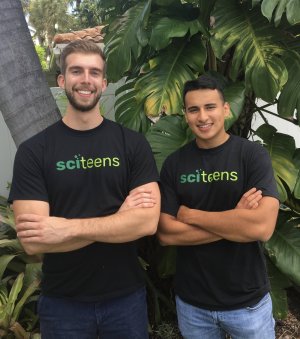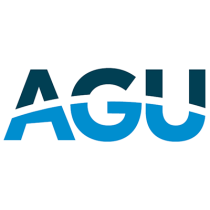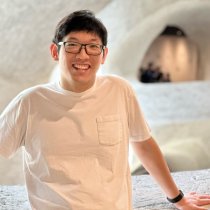Spotlight
Forging Fresh Futures at Spring SciTeens Camp
April 28, 2021
In February, we got an insight into how big ecology datasets are being used to inspire the next generation of ecologists through SciTeens. SciTeens aims to make free STEM resources accessible to all students through online curricula, outreach, and mentoring. The creators, Carlos Mercado-Lara and John Sutor, leveraged NEON data to create their first data science projects.
Recently, SciTeens partnered with Florida State University to offer a virtual Data Science Camp for high school students in Florida. Participants learned how to manipulate and analyze data in the Python computer language and present data at a college level. The students in the Ecological Data Science Camp explored data from the NEON program and had an introduction into techniques for importing and analyzing the data.
Two NEON scientists, Maria Viggiano Beltrocco and Felipe Sanchez from Domain 04 and Domain 03, were guest speakers at the camp. "We had a great time sharing our experience as field ecologists," says Beltrocco, "and getting to know the students' curiosity and interest towards field science."
We caught up with some of the students after the camp and got some insight into their experience:
Miranda Miller-Bruzos
Junior, Boca Raton Community High School
What experience did you have with the subject of ecology before doing the SciTeens camp?
I didn't really have too much experience in the subject of ecology. I did take AP Environmental Science and AICE [Advanced International Certificate of Education] marine science, so I did learn about different creatures and different aspects like climate change and carbon flux. We talked about some topics, but I wouldn't say they were necessarily focused on ecology.
Were you already interested in ecology?
Yes – I've always been interested in the environment and wanting to do more research, and I think that in the future I want to do research. It was definitely something I was interested in.
Did you have any experience coding before?
Not really. One time, maybe for a week in freshman year, I used Grasshopper, an app that tries to teach you how to code. But I really didn't know anything.
Did you encounter any obstacles, and how did you work through them?
I did run into a lot of trouble, especially with my final project. I really just asked for help. After the actual meeting, the camp had an hour where you can work with the SciTeens mentors. If I had any questions or encountered any problems, I asked them. With their help, I was able to do everything.
Choose one data product you worked with – what did you end up doing with it?
For my project, I used the NEON Soaproot Saddle (SOAP) site in California and the Disney Wilderness Preserve (DSNY) site in Florida. I coded to analyze the mean humidity and compared the patterns between both of them… I also calculated the mean of the data and made graphs so I could see the pattern of the relative humidity.
What about this experience (both the SciTeens camp and working with NEON data) might make you want to work with ecological data in the future?
I never really knew what I wanted to do. I knew that I was interested in the environment and wanted to help it somehow, but I didn't know what part. I didn't know if I wanted to be a lawyer or study specific things. Doing this camp and hearing from the NEON staff guests made me realize that I actually want to do research. I'm very interested in actually going out into the field, collecting data, and analyzing differences. There were two NEON guest speakers - one of the speakers said that she works with multiple aspects of ecology and is very hands on, which is what I am into.
Alessandra Castillejos
Sophomore, Cypress Bay High School
What experience did you have with the subject of ecology before doing the SciTeens camp?
I didn't really have any experience with ecology, but I was very interested in exploring this field, especially now because the change in climate is affecting many of our ecosystems. These ecosystems are in danger. I believe studying ecology can provide us with a solution to combat this - it can help with resource allocation and can help people realize the effects our actions have on the environment.
Had you worked with any ecology data sets before?
No, this was my first time.
Did you have any experience coding before?
Yes. Last year, I took Computer Science Principles at my school. I learned a little bit of Java Script, but I didn't go in-depth and I didn't really like the curriculum. However, this year, I am taking Computer Science A, and that really developed my critical thinking skills. I was hoping to learn Python too to deepen my knowledge base. Coding just offers so many opportunities and you can do so much with it. That's why I find it so fascinating.
What NEON data products did you explore during the camp? Did you find a favorite data product or product type?
I worked with data from the Central Plains Experimental Range (CPER) NEON site. I basically studied how temperature correlates with the amount of carbon flux during the summertime (specifically July) versus winter (specifically December). My results were essentially with higher temperatures, there's a greater amount of carbon flux.
Did you find a favorite data product, or product type?
I found all the data products interesting. Data from SOAP was really interesting as well. I also specifically studied with one in Colorado because I want to go to Colorado one day, and I learned a little bit about the environment there.
Did you find anything interesting or unexpected?
I found the magnitude of the ways you can use Python to present data extremely interesting. In Python, you can show these values through a relationship or a story and not just with meaningless numbers. While working with the NEON data, I found it really interesting how all these values in the dataset represent a relationship in the environment and nature… Those values show a relationship with humans as well. All of this can be useful in allocating resources, maintaining clean air, tracking weather, and sustaining biodiversity, especially with climate change.
What about this experience (both the SciTeens camp and working with NEON data) might make you want to work with ecological data in the future?
You can do so much with coding and it provides the answers to most of our problems now and in the future. The more we gather data and learn about ecology, the better we can help combat the problems that are very dangerous to our ecosystems right now. Hopefully, we can help sustain a clean environment in the future or take the steps to do so.
NEON is looking forward to seeing what other big ideas SciTeens implements! Through this and other programs, we're excited to see more young minds putting data from NEON and other vast ecological networks to use.



